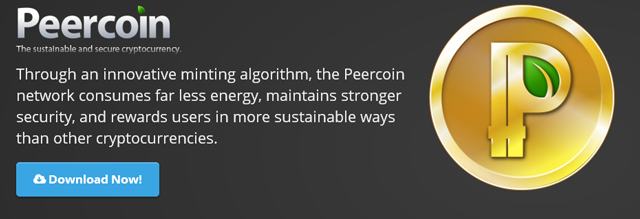
Peercoin.net’s main image stresses the coin’s green properties and the nature of its inflation, which is allegedly less than Bitcoin (BTC).
Peercoin (PPC), the third most capitalized cryptocurrency (crypto for short), is rumored to be written about in the New York Times. Many believe this will boost the crypto’s value and catapult it into the mainstream. Here’s 5 Fast Facts.
1. The Article is Called ‘In Bitcoin’s Orbit: Rival Virtual Currencies Vie for Acceptance‘
The article tells the story of Lawrence Blankenship who is “putting his money on peercoin.” He is accepting Peercoin at a Star Trek convention that is organizing in his hometown. He said, “Looking down the road 10 years from now, I definitely see bitcoin being ousted. Everyone’s going to start switching to other coins, and hopefully PeerCoin comes out ahead in that.”
The articles quotes Sunny King, creator of Peercoin saying, “We are not greedy, we think crypto-currency also needs moral character behind it.”
Lawrence is reportedly pushing for King’s currencies, which includes Primecoin in addition to Peercoin.
First, though, he said, the “challenge is to take this out of the geek world and make it something my mom could use.”
2. A Senior Editor at Peercoin Talk Says Articles Are Coming From Wired and the Wall Street Journal Soon
“Expect to see us on Wired and WSJ next. I spoke to writers at both earlier this afternoon, we have calls scheduled on Monday. We promised we were aggressively going after mainstream in the newsletter, the community is committed to delivering.” just posted by Sr. editor on peercointalk.
Said a source on the BTC-E Trollbox, a chat box renown for people pushing (and pulling) for crypto.
3. Peercoin is Like Bitcoin, but Requires Less Resources to Maintain and Produce
Peercoin’s logo features a leaf because the crypto takes less energy to “mine.” Mining, in this case, means producing more Peercoin by verifying transactions, similar to how Bitcoin and Litecoin (LTC) work. The difference is that Peercoin’s mechanism uses a method called “proof of stake,” where miners aren’t just verifying transactions, they are proving how much Peercoin they hold. At least, this will be the case in the future. Presently, Peercoin is mined using primarily proof-of-work, but this is said to be a future-proofing quality of PPC.
Peercoin is considered green because due to the proof-of-work system, it will consume significantly less power to maintain the network. Bitcoin mining, based around proof-of-work reportedly costs some $150,000 a day.
4. The PeercoinTalk Forum Has Prepared a Guide for Newcomers Brought in by the NYT Article

The forum post contains ample information on how to get started using Peercoin including how to start a Peercoin wallet.
If you are interested in buying Peercoin in America, consult our guide to buying crypto.
5. Peercoin has Theoretically Infinite Coins and Requires ‘Centralized Checkpointing’
According to Wikipedia, there are 20 million Peercoins in existence. While there is no upper limit to the number of coins, in theory, Peercoin is unlikely to ever have more than 2.1 billion coins due to how it is set up.
On the controversial side, Peercoin is not as decentralized as Bitcoin because it requires “centralized checkpointing.” This property means that Peercoins must be checked by a central source. While this is a dealbreaker for many crypto-enthusiasts, there are plans to get rid of this quality of PPC as soon as possible. At present, it is said to prevent 51% attacks and other vulnerabilities that may arise.
For more Peercoin information, see the Peercoin Talk forum or subreddit.
